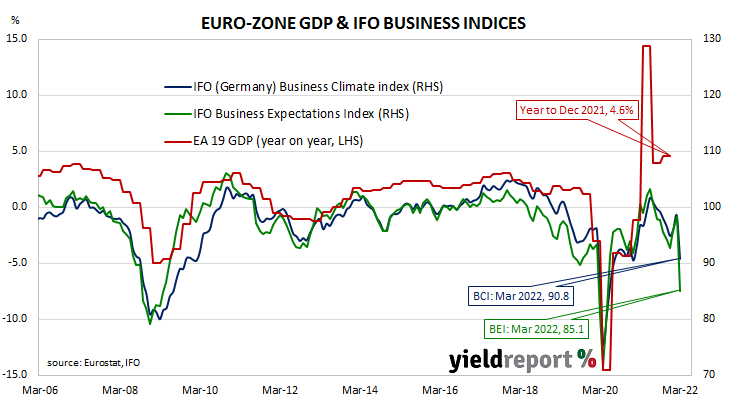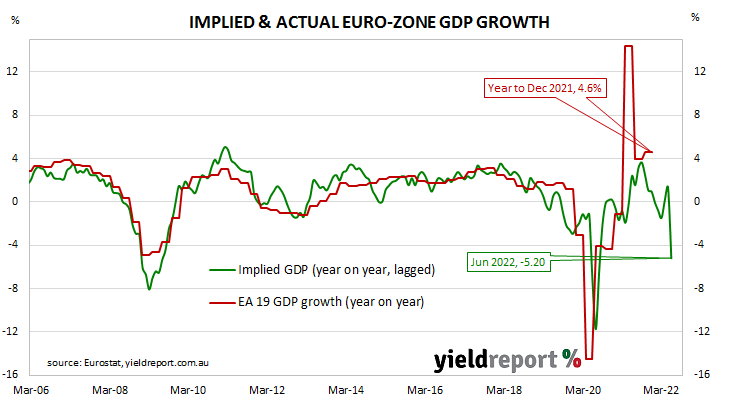Summary: ifo business climate index down in March, below expected figure; expectations, current conditions indices both down; sentiment in German economy “collapses”, companies “expecting tough times”; expectations index implies euro-zone GDP contraction in year to June 2022.
Following a recession in 2009/2010, the ifo Institute’s Business Climate Index largely ignored the European debt-crisis of 2010-2012, mostly posting average-to-elevated readings through to early-2020. However, the index was quick to react in the March 2020 survey, falling precipitously. The rebound which began in May of that year was almost as sharp but it was also characterised by a period of below-average readings. Readings through much of 2021 generally fluctuated around the long-term average.
According to the latest report released by ifo, German business sentiment has deteriorated substantially. March’s Business Climate Index recorded a reading of 90.8, below the expected reading of 93.9 as well as February’s final reading of 98.5. The average reading since January 2005 is just above 97.
“Sentiment in the German economy has collapsed,” said Clemens Fuest, President of the ifo Institute. “Companies in Germany are expecting tough times,” he added.
German firms’ views of current conditions and the outlook both took a turn for the worse. The expectations index declined from February’s revised figure of 98.6 to 97.0 while the current situation index dropped from 98.4 to 85.1.
German and French long-term bond yields both increased on the day. By the close of business, the German 10-year bund rate had gained 7bps to 0.59% while the French 10-year OAT yield finished 3bps higher at 1.01%.
The ifo Institute’s business climate index is a composite index which combines German companies’ views of current conditions with their outlook for the next six months. It has similarities to consumer sentiment indices in the US such as the ones produced by The Conference Board and the University of Michigan.
It also displays a solid correlation with euro-zone GDP growth rates. However, the expectations index is a better predictor as it has a higher correlation when lagged by one quarter. March’s expectations index implies a 5.2% year-on-year contraction in GDP to the end of June 2022.



